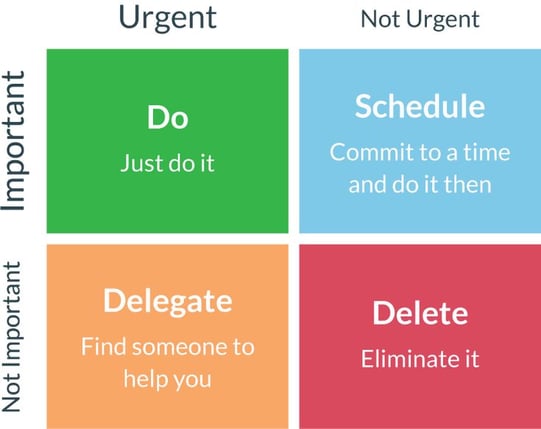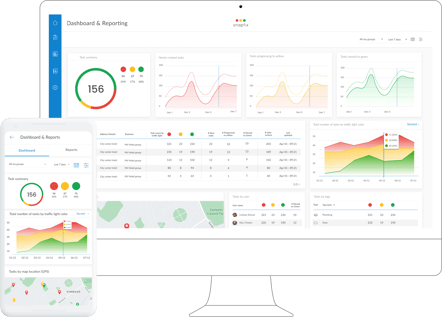 For many managers and employees, time management is a myth! And we can’t blame them. With myriad activities demanding our attention at every turn, time management can become more of a purist’s idea than a practical pathway to higher productivity.
For many managers and employees, time management is a myth! And we can’t blame them. With myriad activities demanding our attention at every turn, time management can become more of a purist’s idea than a practical pathway to higher productivity.
However, several studies have shown that time management can improve performance, productivity, and efficiency in the workplace and in personal lives.
Time management is often confused as completing multiple tasks on a to-do list and calling it quits for the day. However, time management is a more nuanced subject with clinical precision in execution and strategy that ensures that the same results are achieved every time, regardless of the circumstance.
This article aims to educate managers, employees, staff board members, directors, and anyone that needs to understand time management and apply it strategically for better results.
What is Time Management?
There are several definitions of time management on the internet, and it doesn’t matter which one you decide to go with; they all mean the same thing in the end. Time management is the concept of actively and consciously determining the amount of time you are going to spend on your activities relative to their importance and urgency!
Many agree that Frederick Taylor’s scientific management techniques are the foundations for the concept of time management we use today. The goal of any time management scheme is to increase productivity with the least amount of effort possible.
Time management isn’t critical just because it helps to boost productivity. In the current work atmosphere, where job satisfaction and burnout have become major concerns for employees and managers alike, it is crucial to ensure that employees don’t feel overwhelmed with activities. Hence, the need for time management.
Carla Crutsinger’s book Thinking Smarter: Skills for Academic Success defines an excellent way to think about time management. She describes time management as the process of:

- - Determining and setting goals
- - Arranging goals based on their priority
- - Analyzing the time required to complete each goal
- - Adjusting the plans for the goals as they change
- - Taking a look at and reprioritizing goals daily
- - Critically assessing the obtained results
- - Rinse and repeat actions
Why Your Team Needs Time Management Strategies to Function Efficiently
Perhaps you are the manager of a hotel, a factory, an organization, or even an employee seeking to improve your team’s efficiency in terms of work output and profitability. One of the best ways to improve efficiency is by considering all the many ways your team members can further improve the quality and, in some cases, the quantity of their output without overworking them.
Apart from helping to maximize your team members’ time and energy, there are many reasons to consider implementing a time management strategy in your facility. Here are some of the reasons to consider a time management strategy for your team:
- - Increased Focus: Multitasking can be a great way to do less in more time. Yes, I know that sounds counter-intuitive, and it is. This is because several studies show that humans don’t really multitask. Instead, they context switch. In reality, while we can juggle multiple tasks at once, studies show that all we are really doing is switching our concentration from one task to another simultaneously. The only difference is that some people are better at context-switching than others, making it seem like they are multitasking. Computers use the same principle to run multiple tasks simultaneously, switching quickly between different tasks simultaneously; however, the speed at which they do it makes it seem seamless. Time management makes it easier for individuals to focus on a particular task and give 100% of their abilities to achieve the best results possible.
- - Reduces Fire Quenching: Many of us are used to having a to-do list for the day and promising to stick to it no matter what. However, it only takes one email or message from a top executive to throw our lists out the window and spend the entire day fixing a problem that we were not responsible for in the first place. Time management is a great way to solve the problem of side-tracking our attention from our important tasks. While time management isn’t the ultimate solution to avoid emergency tasks, it can be a great way to manage them!
- - Helps to Reduce the Sense of Overwhelm: The constant thought of having a seemingly infinite number of backlogs that needs to be taken care of can bring with it a sense of overwhelm and an overarching need to do everything at once. Task overload can be easily managed using the right time management strategy. The right time management strategy combined with a priority list can be the difference between finishing your tasks confidently and comfortably and being stuck in an infinite loop of overwhelming workloads.
- - Help You Preserve Energy: One of the fastest ways to deplete your energy reserve and kill your employees’ enthusiasm for work is to constantly change how they work and force them to take on more than they can handle. Time management can help provide your employees and you with a sense of coordination, balance, and predictability, making it easier to pursue a task and complete it successfully.

Time Management Strategies to Consider
Now that you know how time management can impact workflow and efficiency in the workplace, it’s time to learn about some of the popular time management strategies used in the workplace and your personal life.
- - Eisenhower Matrix
- - The 80/20 Rule
- - Time Blocking
- - Pomodoro Technique
Eisenhower Matrix:
The Eisenhower Matrix is a time management system also known as the Urgent-Important Matrix that uses a combination of importance and urgency to sort tasks to know which ones to keep and which to discard. This method was developed by the 34th President of the United States of America to help him make tough decisions during World War II and after.
Eisenhower Matrix essentially uses a four-quadrant system that divides a square into four even quadrants. The top y-axis is labeled important, and the bottom y-axis is labeled unimportant. The left x-axis and right x-axis are labeled urgent and not urgent, respectively.

As seen below, you can label the quadrants as follows:
- - Top left: Perform tasks
You should perform the tasks in this section first. This is the section under which the important and urgent tasks are listed.
- - Top right: Delay Tasks
The tasks in this section are important but not urgent. These tasks can be delayed but should be taken seriously and moved into the upper left quadrant of the Eisenhower Matrix in due time.
- - Bottom left: Delegate Tasks
The tasks in the bottom left quadrant are urgent but not important and can, therefore, be delegated or performed after the tasks in the upper left quadrants are done.
- - Bottom right: Ignore/Delete Tasks
The tasks in the bottom right quadrant are not urgent and unimportant. These tasks should be ignored or deleted from your priority list to make room for critical and urgent tasks.
The 80/20 Rule (Pareto Principle):
The 80/20 rule is also known as the Pareto Principle. It was developed by an Italian economist, Vilfredo Pareto, based on the observation that 80% of the land in Italy was owned by 20% of the population.
In terms of productivity, it is observed that 80% of a company’s result comes from 20% of the effort put in by employees. This means a lot of input in your workflow is either complementary or a waste.
The idea for this principle is that the tasks with the highest productivity impacts should be done first, and the rest can be done only after those high-impact tasks have been completed successfully.
It is easy to get drawn to the easy tasks; however, to get the most out of your day, you should do the challenging and most impactful things first. So, the next time you need to decide between rearranging your desk and sending out an important email, you know which one you should do first!
Time Blocking:
 The time blocking time management technique is a widely used and common technique by almost everyone in various organizations and departments. A lot of us do time blocking without even knowing it. Do you remember all those times you said, “once it is 4 pm, I’ll begin task B and stop doing task A”? That’s time-blocking.
The time blocking time management technique is a widely used and common technique by almost everyone in various organizations and departments. A lot of us do time blocking without even knowing it. Do you remember all those times you said, “once it is 4 pm, I’ll begin task B and stop doing task A”? That’s time-blocking.
However, the difference between a random act and a technique lies in its intentionality. Time blocking involves the careful and deliberate allocation of time to tasks based on their requirements and urgency.
The key to using the time-blocking technique is to be as detailed as possible. The more details about what you would be doing in a particular block of time, the higher the likelihood that you’d be more productive at the end of the day.
The idea with time blocking is not to create rigid task descriptions that you cannot deviate from during a block of time in your day but instead to create a flexible description of the task, how you intend to achieve it, and the desired result.
Pomodoro Technique:
I like to call the Pomodoro Technique aka the time-splitting time management technique. The Pomodoro Technique is a strategy that involves splitting your workday into smaller chunks of productivity periods. The usual time structure is four (4) 25-minute productivity sessions divided by five (5)-minute breaks after every session.
This method allows you to break your tasks into smaller time chunks and makes it less daunting to finish complex projects when you know that you only have to do something meaningful for 25 minutes at a time, and you get rewarded with a 5-minute break right after. The five (5)-minute breaks allow you to rest and recover from the intense focus on working during the 25-minutes work sessions, allowing you to be more creative and fulfilled.
Trying to implement the time management techniques discussed in this article without talking about the best tool to help you successfully implement these techniques would be a disservice to you. Hence, we introduce to you SNAPFIX!
Achieving Time Management and Increased Productivity with Snapfix
Snapfix is described by many hotel managers, employees, and facility managers as the simplest facility and hotel maintenance platform in the world. This praise is due to the simple UI and exceptional user experience offered by the platform for everything from hotel maintenance to building management, infrastructure management, and employee coordination.
The best thing about using Snapfix to improve your team’s time management is that it allows you to prioritize tasks based on importance and urgency, making it an essential tool for anyone using the Eisenhower Matrix time management technique or any time management technique for that matter!

Snapfix is used by industries such as hospitality, manufacturing, healthcare, Education, and many more.
Snapfix offers several options to managers, heads of departments, maintenance teams, and more. Some of those options include: Work Orders ; Planned Maintenance ; Fire Safety ; Data Analytics
All the various tools and workflows offered by Snapfix make it easier to improve your team’s productivity by allowing you to create work orders on the fly, assign appropriate tasks to the appropriate employees, mark tasks as active, ongoing, or done, and so much more!
For individual employees, Snapfix makes it easy to assess your progress for the day and have an idea of what is coming next.
If you want to see what Snapfix can do for your team right now, book a free demo with us!



